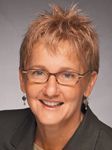Article
Balance supply and demand to perfect your practice schedule
Consider your practice in terms of the basic economics of supply and demand.

To do so, think of your practice in terms of the basic economics of supply and demand. The appointments on the schedule represent the supply-in this case provider availability. Patient requests for appointments are the demand. The art of scheduling lies in balancing supply and demand.
Some practices manage to stay so balanced, whereas others seem to tip over with too many appointments packed into a day. To guide your scheduling toward a perfect balance, start by examining supply, the side of the equation your practice can control.
Once you've gathered the data, examine their effects. Does the last appointment before lunch run into the lunch hour? You may be happy to see patients during your designated lunch breaks, but your nurse and other staff members may not be so willing to give up their lunch breaks 3 or 4 days a week. Stagger your staff's lunch breaks so that you have support to see patients without requiring staff members to give up lunch entirely.
How about starting on time, with everything in place that is required for patient care? Starting the staff day 30 minutes before the first scheduled visit allows the staff to fully stock each exam room, huddle over the day's schedule to anticipate potential problem areas, and maybe even get a jump on the day by rooming an early-arriving patient before the patient's appointment time. Of course, you also must start the day on schedule to stay on schedule.
TWO EXPERIENCES OFFER LESSONS
Let's look at the way two practices handled their scheduling issues and the lessons you can learn from their experiences.
Practice A, with four providers, scheduled patients starting at 8 a.m. every weekday. The practice unlocked the front door then and was faced with four to 10 patients and their accompanying family members. The practice immediately was behind schedule and had to take additional time with those first patients of the day explaining and/or apologizing for their wait outside the front door. Some patients even commented on that wait to their providers.
The check-in process and rooming process took at least 15 minutes, so the providers were trained to not expect an 8 a.m. patient until 8:15 a.m. or later. With the occasional staff member absence and the occasional delay in rooming (one patient may have taken longer to provide a urine specimen than another patient, for instance), the providers fell into the habit of arriving at the office at 8:30 a.m., a full 30 minutes after the first patient appointment. If the day started behind schedule, it continued behind schedule, and everyone felt the pressure and stress that came with being behind all day long.
An easy fix: Unlock the front door at 7:30 a.m. and start rooming patients so the providers do not start the day behind schedule.
Practice B, as have many primary care practices, realized that the demand for same-day acute visits was overwhelming its schedule.
The practice had tried a doctor-of-the-day (DOD) approach, where the DOD's schedule intentionally was underbooked and all patients who called in and needed to be seen that day were added to the DOD's schedule. That approach didn't work because the practice did not maintain the discipline to keep the DOD's preplanned schedule light.
Ultimately, the practice settled on a dedicated walk-in option for patients. Every day from 7 a.m. until 9 a.m., the practice is open to all walk-in patients. The physicians rotate the days of the week and double up on Monday mornings.
The practice promotes the walk-in option to patients calling in and educates patients at their regularly scheduled appointments, too. The result has been a decrease in incoming phone calls-because patients know they can just walk in the next morning-and an increase in patient and provider satisfaction. The patients are seen, and the providers' daily schedules have stabilized.
The lesson? Change your supply to better accommodate demand and make your day less chaotic.





